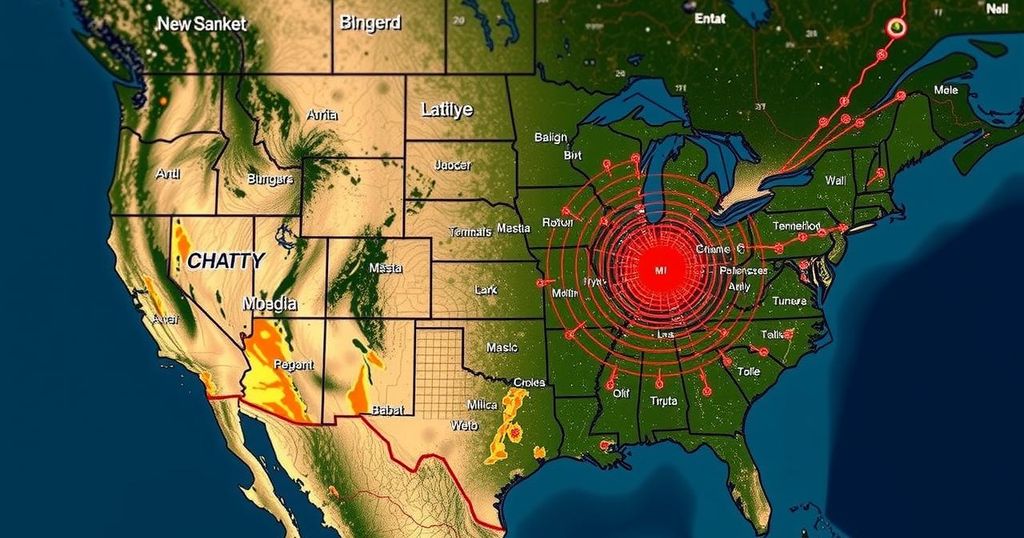Thanksgiving Day Earthquakes Shake the Eastern United States, Highlighting Seismic Risks

On Thanksgiving Day, minor earthquakes were reported in Virginia, Mississippi, Tennessee, and Arkansas, with the strongest registering 2.5 in Mississippi. Residents experienced mild shaking, but no injuries or damages were reported. These events occurred in the historically active New Madrid Seismic Zone, raising concerns about preparedness for potentially catastrophic future earthquakes in this densely populated area.
On Thanksgiving Day, earthquakes were reported across the eastern United States, specifically affecting Virginia, Mississippi, Tennessee, and Arkansas. Notably, the most significant event occurred in Mississippi, registering a magnitude of 2.5. While residents in these regions experienced minor shaking and some reported sounds resembling booms, there were no reports of injuries or significant damage. The first tremor struck central Virginia shortly before midnight, with several aftershocks occurring throughout the early morning hours in Tennessee and Arkansas, all situated within the New Madrid Seismic Zone (NMSZ).
The first recorded earthquake occurred at 11:39 PM in Virginia, near Louisa, followed by a 2.5 magnitude quake in Mississippi at 1:48 AM near Canton. Subsequently, a series of low-magnitude quakes struck western Tennessee, all occurring in rapid succession during the morning hours. The final event happened in Strawberry, Arkansas, at 4:24 AM, also within the NMSZ. Though these seismic activities were minor, experts remain concerned about the preparedness of local inhabitants for larger, potentially destructive quakes in the future.
Historically, the New Madrid Seismic Zone has a reputation for violent quakes, with significant events occurring between December 1811 and February 1812. The first major earthquake, registering an estimated 8.1 magnitude, was felt over wide areas, including far-off cities like New York and Washington, DC. Reports from that time describe extraordinary phenomena, such as prolonged shaking and liquefaction of the ground. The follow-up quakes in January and February 1812 also caused extensive damage and prompted a series of unusual natural occurrences, including the appearance of earthquake lights and shifts in water behavior in the nearby Mississippi River.
As scientists continue to monitor the region, it is clear that the threat of significant quakes still looms over the area. With a denser population residing in the vicinity of the NMSZ compared to the early 1800s, the impact of a future seismic event could have dire consequences for both life and property. The unpredictability of such natural disasters makes it crucial for residents to enhance preparation efforts, given that the occurrence of a major earthquake is not if, but when.
The article discusses recent earthquake activity in the eastern United States, particularly focusing on events that transpired on Thanksgiving Day in states such as Virginia, Mississippi, Tennessee, and Arkansas. The regions affected are notable for their historical significance in seismic activity, particularly due to the New Madrid Seismic Zone, which has a history of major earthquakes. Understanding this background is essential, as it highlights the likelihood of future seismic events and the need for preparedness among residents.
In conclusion, the earthquakes experienced on Thanksgiving Day across several eastern states serve as a critical reminder of the seismic risks associated with the New Madrid Seismic Zone. While recent tremors did not result in damage or injuries, historical data highlights the potential for a more significant earthquake in the future. With a population much larger than in the early 1800s, there is an urgent need for enhanced preparedness measures to mitigate the risks posed by potential seismic activity in the region.
Original Source: weatherboy.com







